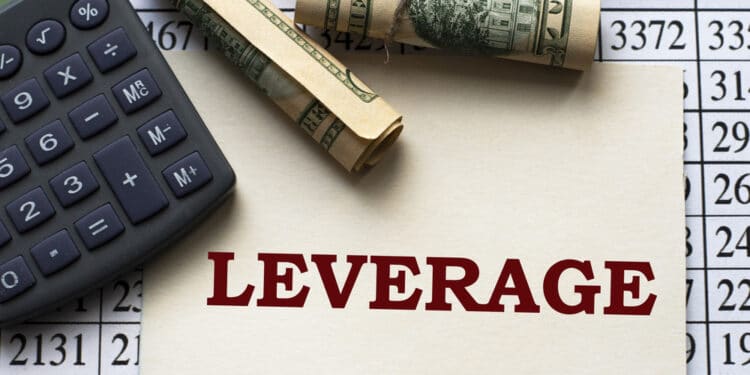For traders to effectively control their risk, forex calculators are a must-have accessory. With prudence and perseverance, anyone can succeed in the Forex markets.
Consequently, we must be aware of the percentage of our capital that we are willing to put at risk on each trade and how much leverage we intend to utilize given our margin. When placing a large amount of money on a single trade, it is important to keep the percentage risk low.
When a trader uses leverage, they can take control of a greater position while spending less money (margin).
You should beware that leverage can magnify not only your profits but also losses. For instance, for you to lose all of your money if you buy GBPUSD at 1.3230, it would require the exchange rate to go to zero. The exchange rate should also double to realize 100% profit. In comparison, only a price movement that is 100 times smaller will result in the same profit or loss if you use the maximum 100:1 leverage.
Margin is the amount of money a trader must put up in order to initiate a new trade. It is what a broker uses as a cushion in case a trade goes south. It is typically given as a percentage of the value of a trading position.
Unlike a trading fee or commission, you can reclaim it once the deal has been completed. A broker’s primary goal is to safeguard their business from financial losses. It is the broker’s responsibility to liquidate a trader’s open positions if their margin falls below a certain stop-out percentage. The broker has the option of making a margin call prior to liquidation of an account, simply liquidating without making that call.
You may use the margin calculator to figure out exactly how much margin you need to open a trade you want to take. If your account balance is low, you may want to lower the lot size you’re trading or alter the leverage you’re employing.
In most online calculators, you simply need to select the asset you are trading in, define the size of the trade, specify leverage and click “calculate.” The results of the computation will be the amount of money you’ll need to invest as a margin.
Margin and leverage are intertwined. In order to calculate margin, you divide the account’s leverage ratio by the account’s margin. When leverage is 1:50, for example, you will need a margin of 0.02 or 2% of the trading position.
Calculator parameters for FX leverage
In order to keep track of your money and estimate the resources needed to start new positions, a forex calculator is essential. Many Forex calculators are set up in a similar manner and are easy to use. You only need to enter the account type, currency, leverage, and lot size to do calculations. The trader needs to define the asset being traded. The trader’s duty is to input the correct values and leave the rest to the calculator to work out.
For each instrument, the typical lot size is different. Other instrument kinds depend on the applicable market standards. In general, FX pairs are traded in 100,000 units.
- Margin – The amount of money needed to get into this position
- Spread the cost – The entire amount of money that the trader will hand over to the broker, which is calculated by multiplying the spread by the position’s total traded volume.
- Spread – The difference between the bid price and the ask prices.
- Profit & Loss – Negative values indicate a loss, whereas positive ones indicate a profit.
- Swap – This refers to the number of days that a position remains open. Swaps, or overnight interest fees, are charged on any positions that remain open for more than a day.
- Buy swap – The interest payment that results from holding a buy position open for a specified number of days.
- Sell swap –This is the interest paid for holding a sell position for a predetermined period of time.
Calculating pips
In the currency market, a pip, also known as a price interest point, is a unit that measures the change of a currency pair’s value, which is normally priced to four decimal places. However, two decimal places are used to price currency pairs involving the Japanese yen (JPY). The value of a pip does not change depending on the size of leverage employed. Rather, it is influenced by the leverage you have.
Swap calculations
The term “swap” sometimes causes traders to become perplexed. To put it an easier way, it’s how much money you’ll have to pay in interest when your trading day ends. When a trader has open positions beyond 5 pm EST, they are subject to the overnight interest rate of the country in which they reside. As a result, swaps are basically interest rates on leveraged funds.
Calculator for profit and loss
The profit/loss calculator performs the task of computing profit and loss in a trading transaction or investment.
Transaction parameters such as the trade size, the opening price, closing price, and the duration of trade are core parameters used to determine the amount of profit/loss. The calculator tells you how much profit (or loss) you’ve made (or lost) on each trade.
In summary
A trading calculator is an invaluable tool that can help investors and traders save time when determining their leverage and associated elements like margin, trading size, swap values, profit, and loss amounts. The time saved by using a calculator might be put to considerably better use in preparing for your next trading session.




